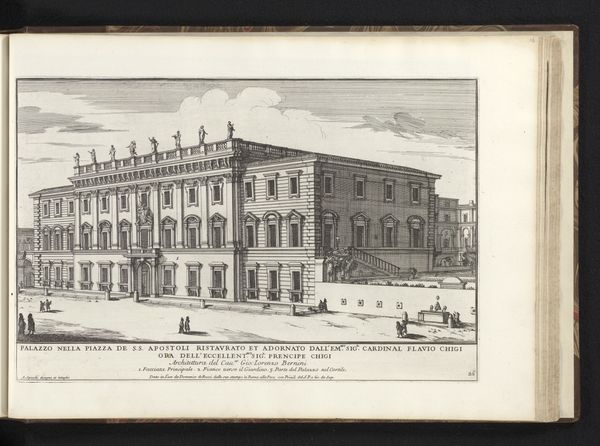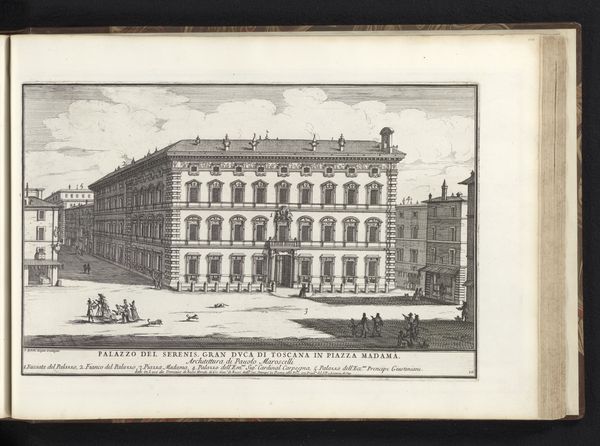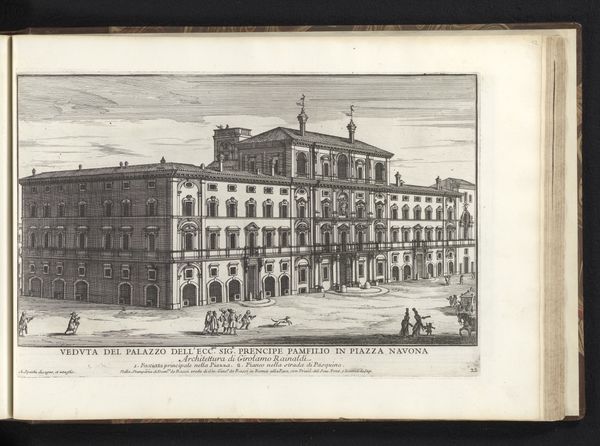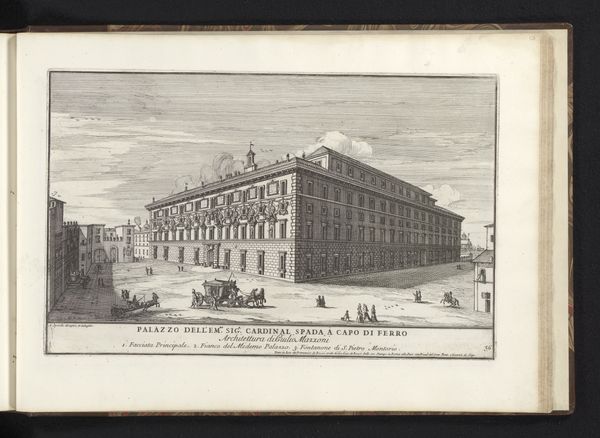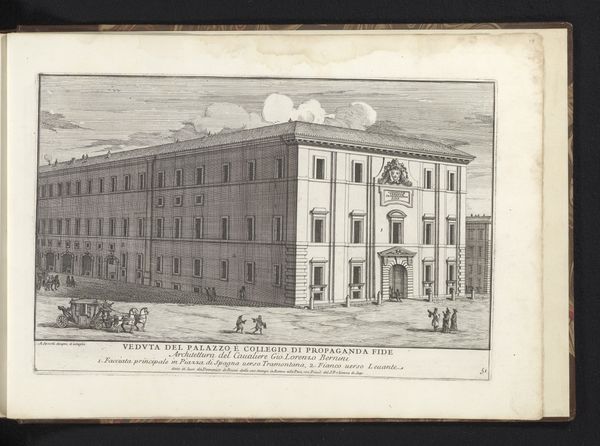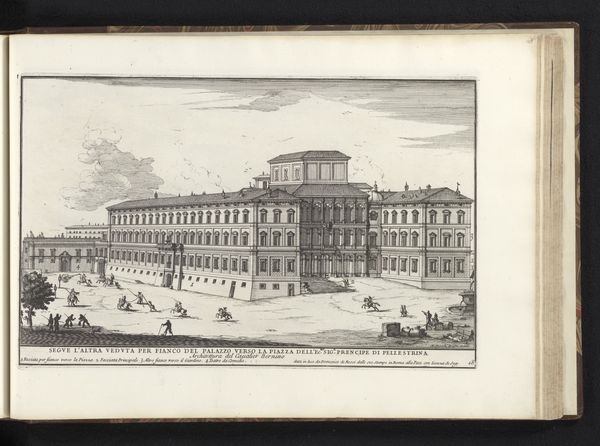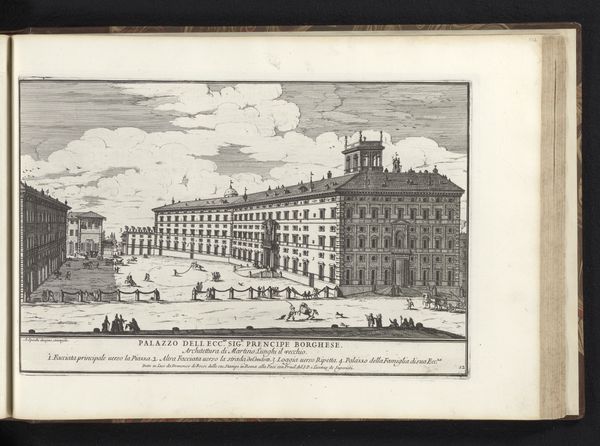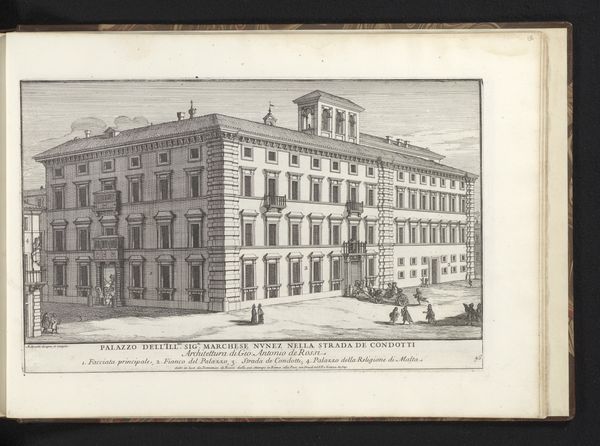
print, engraving, architecture
# print
#
perspective
#
geometric
#
pen-ink sketch
#
line
#
cityscape
#
italian-renaissance
#
engraving
#
architecture
Dimensions: height 210 mm, width 333 mm
Copyright: Rijks Museum: Open Domain
Editor: This is "Palazzo Colonna di Sciarra te Rome" by Alessandro Specchi, created in 1699. It’s an engraving, so ink on paper. It looks very precise and orderly, almost like an architect's blueprint rather than a landscape. What do you see in this piece, particularly beyond the visual representation of the building? Curator: What I find compelling is the intersection of labor, production, and representation it embodies. Consider the process: the initial architectural plans, the labor of translating that into an engraving – a *print*, made for dissemination, for consumption. It was never meant to be “high art”, and what could a closer inspection of this ‘craft’ unveil? Editor: So, you’re saying it's important to look at who made it and *how* it was made? Curator: Precisely! Think about the engraver, meticulously etching the lines. Each line represents a conscious decision, translating three-dimensional architecture into a two-dimensional plane, facilitated by reproducible material. This speaks volumes about the intent. This isn’t about individual artistic genius, but about disseminating architectural information. Editor: It’s less about self-expression, and more about information and circulation. How might the engraving process itself influenced the style of the work? Curator: Notice the linework. Its precision enabled the exact reproduction of architectural features. The print isn’t trying to romanticize; it is providing something useful. What can be gathered, as well, about its place in Rome’s architectural history or political background? What stories does it have to share with others? Editor: So, we’ve moved beyond just *seeing* a pretty building to understanding its production and purpose. That is incredibly insightful. Curator: Indeed. By focusing on the materiality and means of production, we uncover layers of meaning beyond the immediate aesthetic.
Comments
No comments
Be the first to comment and join the conversation on the ultimate creative platform.
